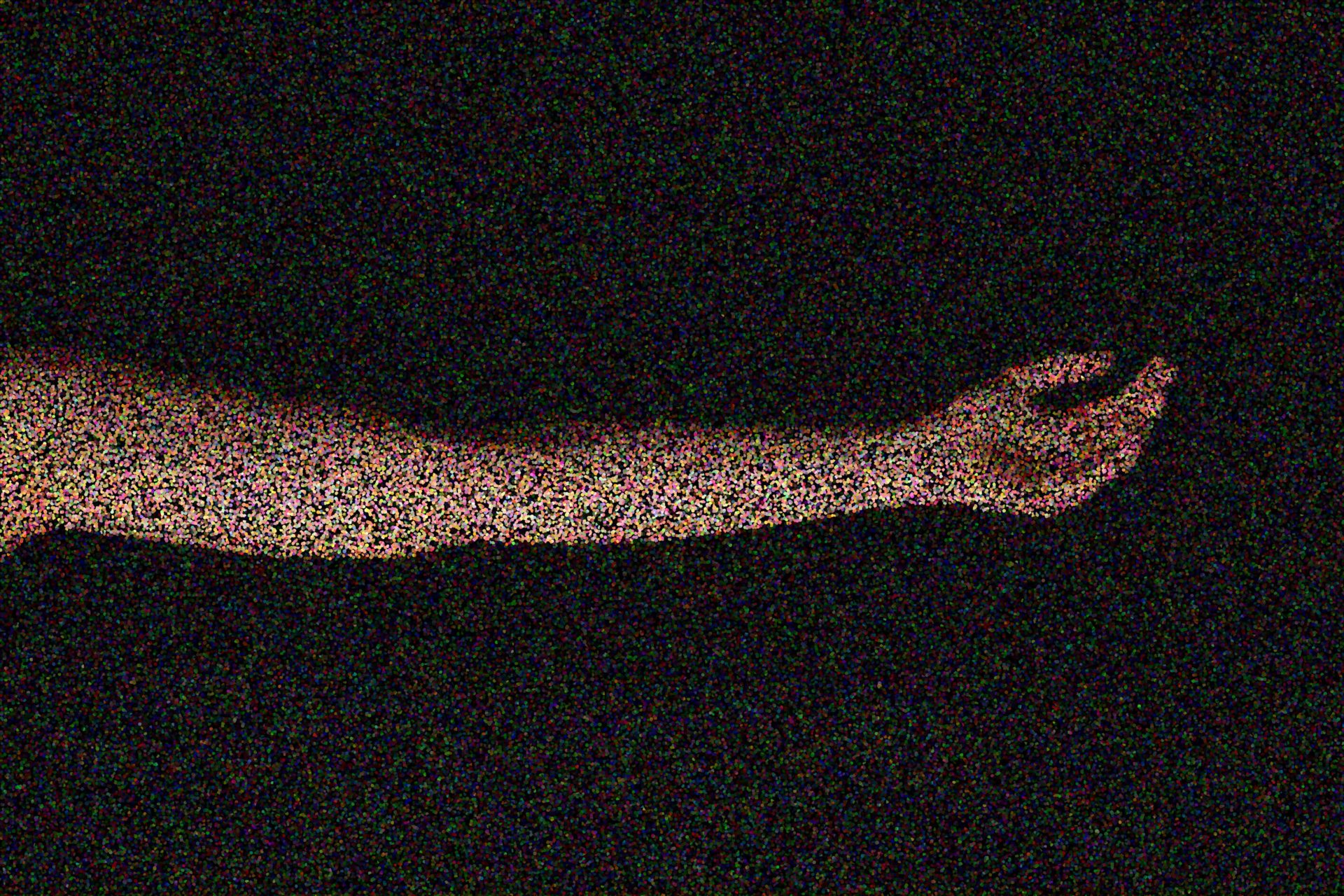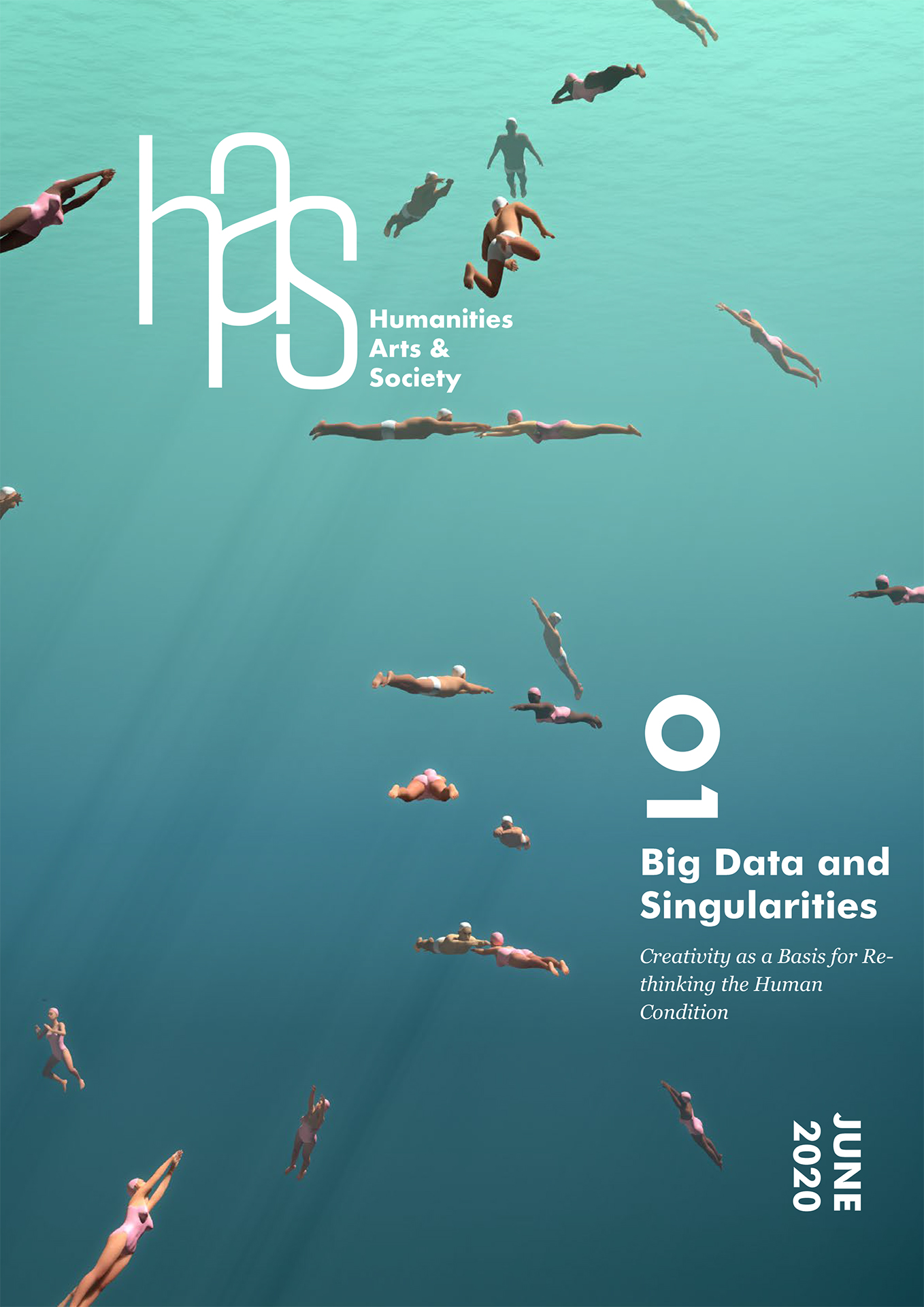The becoming of images crushed by algorithms

Every single action executed online—the tiniest message or online search—generates a tremendous amount of data. We produce billions and billions of bits of data each day. This information is harvested by giant corporations such as Amazon, Google, Twitter, and Facebook, and is stored in massive data centres.
The incalculable volume of data susceptible of being stored and analyzed in this manner has motivated businesses to utilise it for commercial purposes. But why exploit this data? And how? These are the questions facing businesses that seek to increase their brand visibility and stand out from their competitors. In marketing, the use of data can help anticipate customers’ needs, determine their reaction to a product, and influence purchases.

Acquiring Value
The goal is not to collect data about individuals’ lifestyles, but to learn how to handle, process, and grind data so as to gain leverage from it. Taken separately, the elements of big data aren’t worth any more than their weight in bits. But after processing them through the appropriate software, they acquire a certain value. Translated into digital language and transformed through prediction-oriented algorithms, they become precious sources of information that allow companies to anticipate the needs of consumers. But how? “Data lakes” filled with unrelated raw data are classified in no particular order or hierarchy. In order to create value, it is necessary to grind, cut into pieces, trim, and label each piece of data.
Labeling consists of classifying each data section independently and assigning a value to it. Once an intermediate value has been allocated to each section, it becomes easy to assemble words or images based on the common values previously assigned by the machine. In other words, trimming down data consists in creating a list of disparate elements to which we apply a common function or value, undoing initial bonds in order to create new algorithmic relationships. In computational terms, Big Data deconstructs in order to reassemble, restructure, and increase value.
By assigning value to each element, companies exploiting big data are led to the discovery of the laws, principles, and parameters behind each phenomenon. Then, by assigning value to each section of data, the companies are led to discover new laws and new relations operating between facts. Once they have assigned value to the data, they can search within those data sections in order to make decisions and take actions such as predicting customer behaviour during a certain time of the year and marketing a certain product accordingly. Datafication can also be used for political purposes—encouraging voting intentions in favour of a particular candidate, for instance. Through the value assigned to each element, data becomes exploitable. Software programs such as MapReduce and Spark use algorithms capable of transforming raw material into valuable assets. They make visible aspects of human activity that would otherwise remain invisible. Different aspects of our lives are transformed into data and formatte—meaning, given a value.
Turning Aside Collected Words
Processing or analyzing data comes down to attributing a value to it. For big-data specialists, this simply means revealing the inherent value that is already contained within the data, as if it were pre-existing. They seem to forget that the value assigned to data is determined by a machine. In fact, the machine creates value where there was previously none. Moreover, it strives toward a way of processing data that is purely commercial. The categorization must therefore be biased—it’s rigged from the start. It aims from the start at a purpose; a purpose is glued onto it. Under these conditions, we can even consider that the datafication distorts the collected speech, now considered as data since a value—justified by commercial interest—has been conferred upon it.
The machine does not interpret—it classifies. It goes against the features of language that are based essentially on doubt, hesitation, uncertainty, assumptions, trial and error, confusion, paradox, and repetition. There is no room for what the subject has to say, no room to judge, decide, position oneself, reflect upon, correct, ponder, assess, debate, or engage. The machine forces its goals and desires onto the subject. The danger does not lie in whether or not we can choose new desires, but rather in assuming that the machine gives us the opportunity to choose, when actually our mode of thinking is modelled on the simulation mode programmed by the computing centre. It is we who, in turn, become deprived of any authentic take on the world, and begin to think like machines.
An Extended Hand in Different Lightings
The starting point of my work is as follows: I have photographed an extended hand in different lighting conditions. (I would like to thank Marie-Lise Vautier, who volunteered as a model, for her patience and willingness.) The process of dismantling has already begun. However, the extended hands, photographed in different lighting conditions, produce different impressions. The exposure value (EV) confers a slightly different characteristic to each image, designating the intensity of the light source and its value in terms of brightness or darkness.
Low light will bring about a soft, smooth result. Harsher, more direct light will produce higher contrast, thus lending a dramatic intensity to the photographed object. Even when sectioned, these images of extended hands move us. I have tried to create a relationship between the light variations perceived on the hand and the light variations reflected on the clouds by the sun, according to the emotions suggested by each image. Artificial light mirrors direct, natural light. There is a correspondence between each celestial value and each hand. With this layout, the hands seem to appear as an imploring gesture, an invocation.
Let us now imagine these images being ground down and processed by algorithms. What would we obtain in the end? Would the exposure value be maintained? Will the effect produced by EV variations be taken into account? Will the perception of the set of images as a whole be the same? Will this plea be safeguarded? Will these images still be gazing at us?
Sylvie Anahory is a researcher and artist, graduate of EHESS. Her studies have led her to be interested in several disciplines, and to reflect on the diversity of forms of knowledge and the porosity between the different arts. Since 2012, she has been practicing photography, questioning its categories, its display devices and its links with our book and media culture, in order to encourage us to look at different points of view.
Sylvie Anahory is a researcher and artist, graduate of EHESS. Her studies have led her to be interested in several disciplines, and to reflect on the diversity of forms of knowledge and the porosity between the different arts. Since 2012, she has been practicing photography, questioning its categories, its display devices and its links with our book and media culture, in order to encourage us to look at different points of view.
